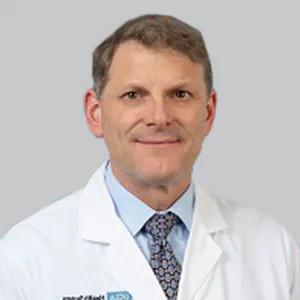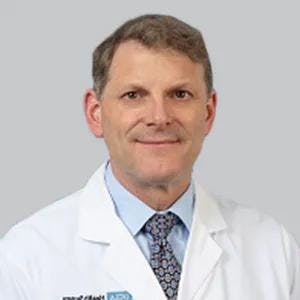The objective damage diagnosis should point directly to the needed EXACT STROKE PROTOCOLS. But I bet you don't have an objective diagnosis. There should be zero variation in stroke rehab delivered. You get an objective damage diagnosis leading DIRECTLY to exact 100% STROKE RECOVERY REHAB PROTOCOLS! No variations, your doctor and therapists follow the protocols.
I consider the NIHSS subjective stroke scale as worthless
Probably get a subjective NIHSS score or mRS score.
Clinical Factors Predict Rehabilitation Dose Therapy in Patients Poststroke
Poststroke patients with more severe deficits and better clinical factors received larger doses of rehabilitation therapy, according to a recently published study.
Steven Cramer, MD

Recent research published in the journal Stroke showed that rehabilitation therapy doses were low during the first year of recovery from stroke and were predicted by clinical factors. This finding suggest the potential to address imbalances in allocation of rehabilitation therapy poststroke through the identification of patients with disability at risk for low doses of the treatment.1
In 510 poststroke patients, most therapy was low and delivered within the first 3 months, 35.0% of patients had no physical therapy, 48.8% received no occupational therapy, and 61.7% had no speech therapy. Notably, discharge destination was significantly related to cumulative therapy (for all therapy types at visit 2, P <.05; occupational therapy visits 3 and 4, P <.05; speech therapy visits 3 and 4, P <.01) and across the variety of sites, between 0% and 71% of patients were discharged to an inpatient rehabilitation facility.
"This
study highlights the importance of rehabilitation therapy after a
stroke and how clinical factors can predict rehabilitation therapy
dose," lead author Brittany M. Young, MD, PhD, and colleagues, wrote.1
"We hope that this information will help healthcare providers tailor
their treatment plans to better meet the needs of stroke patients." (This highlights how fucking godawful stroke rehab is!)
In the prospective observational study, researchers examined rehabilitation therapy doses during the first year of stroke recovery, as well as identified the factors that predict rehabilitation therapy dose. Of the 763 adult poststroke patients enrolled, 510 patients were followed for 1 year (age ranged, 18-97 years; average age, 62.3 years; men, n = 302; women, n = 207). Patients were enrolled 2 to 10 days after stroke onset from 28 acute care hospitals around the United States.
Following the initial hospitalization assessment, the number of physical therapy, occupational therapy, and speech therapy sessions were determined at 3, 6, and 12 months visits. Whether clinical and demographic factors were associated with therapy counts were assessed by a negative binomial regression and to correct multiple comparison, a false discovery rate was used.
The study also reported on the destination of discharge as 222 patients were sent home, 200 were sent to an inpatient rehabilitation facility, and a smaller number of patients were going to other destinations. "We need to do more to ensure that stroke patients receive adequate rehabilitation therapy," Young et al noted.1 "This study provides valuable insights into how we can improve our treatment plans for stroke patients."
For all therapy types at all 3 time points, higher initial National Institutes of Health Stroke Scale (NIHSS) score and weaker grip strength were each significantly associated with larger cumulative therapy doses (for each therapy type at each visit, P <.01). Throughout the study, lower initial NIHSS scores were associated with an increased odds of patients receiving no therapy.
Except for occupational therapy at visit 2, patients with more severe hemineglect had higher amounts of each therapy at all other visits. In particularly, patients on an antidepressant medication at visit 2 (n = 153) was significantly associated with higher amounts of therapy in all modalities in the short-term (visits 2 and 3 or occupational therapy and physical therapy, P<0.01, for speech therapy, P <.05) and long-term (visits 2, 3, and 4 for all therapies, P <.01).
“But in the bigger picture, the findings reinforce that too many patients are missing out on a golden opportunity to maximize recovery during a critical period following a stroke,” said coauthor, Steven Cramer, MD in a statement.2
All told, patients with a greater extent of impairment from stroke might intuitively be expected to receive higher therapy doses because of greater therapy needs, the study authors noted. Results also showed no significant differences in rehabilitation therapy dose between men and women, or between patients of different races or ethnicities. In addition, there were no significant differences observed in rehabilitation therapy dose between patients who were discharged home and those who were discharged to an inpatient rehabilitation facility.
One of the limitations of the study was that it relied on self-reported data for rehabilitation therapy dose, which may have introduced potential bias into the results. Also, the study did not assess the quality of rehabilitation therapy provided, which may be an important factor in determining outcomes. Additionally, the study did not assess long-term outcomes beyond the 1 year after stroke and approximately one-third of patients were lost to follow-up, which may have limited the generalizability of the findings.
“In the initial weeks after a stroke, the brain is ready to undergo maximum rewiring to get people back on their feet. Rehab therapy helps maximize this recovery, with higher rehab therapy doses helping more, but what we found in this study is that most patients are getting rather small doses of rehab therapy,” Cramer, a stroke neurologist and professor of neurology at the David Geffen School of Medicine at UCLA and the California Rehabilitation Institute, said in a statement.1

No comments:
Post a Comment